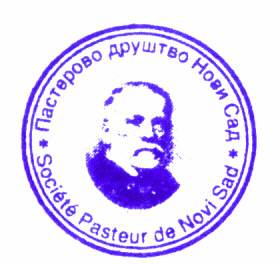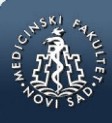md-medicaldata
Main menu:
- Naslovna/Home
- Arhiva/Archive
- Godina 2024, Broj 1
- Godina 2023, Broj 3
- Godina 2023, Broj 1-2
- Godina 2022, Broj 3
- Godina 2022, Broj 1-2
- Godina 2021, Broj 3-4
- Godina 2021, Broj 2
- Godina 2021, Broj 1
- Godina 2020, Broj 4
- Godina 2020, Broj 3
- Godina 2020, Broj 2
- Godina 2020, Broj 1
- Godina 2019, Broj 3
- Godina 2019, Broj 2
- Godina 2019, Broj 1
- Godina 2018, Broj 4
- Godina 2018, Broj 3
- Godina 2018, Broj 2
- Godina 2018, Broj 1
- Godina 2017, Broj 4
- Godina 2017, Broj 3
- Godina 2017, Broj 2
- Godina 2017, Broj 1
- Godina 2016, Broj 4
- Godina 2016, Broj 3
- Godina 2016, Broj 2
- Godina 2016, Broj 1
- Godina 2015, Broj 4
- Godina 2015, Broj 3
- Godina 2015, Broj 2
- Godina 2015, Broj 1
- Godina 2014, Broj 4
- Godina 2014, Broj 3
- Godina 2014, Broj 2
- Godina 2014, Broj 1
- Godina 2013, Broj 4
- Godina 2013, Broj 3
- Godina 2013, Broj 2
- Godina 2013, Broj 1
- Godina 2012, Broj 4
- Godina 2012, Broj 3
- Godina 2012, Broj 2
- Godina 2012, Broj 1
- Godina 2011, Broj 4
- Godina 2011, Broj 3
- Godina 2011, Broj 2
- Godina 2011, Broj 1
- Godina 2010, Broj 4
- Godina 2010, Broj 3
- Godina 2010, Broj 2
- Godina 2010, Broj 1
- Godina 2009, Broj 4
- Godina 2009, Broj 3
- Godina 2009, Broj 2
- Godina 2009, Broj 1
- Supplement
- Galerija/Gallery
- Dešavanja/Events
- Uputstva/Instructions
- Redakcija/Redaction
- Izdavač/Publisher
- Pretplata /Subscriptions
- Saradnja/Cooperation
- Vesti/News
- Kontakt/Contact
 Pasterovo društvo
Pasterovo društvo
- Disclosure of Potential Conflicts of Interest
- WorldMedical Association Declaration of Helsinki Ethical Principles for Medical Research Involving Human Subjects
- Committee on publication Ethics
CIP - Каталогизација у публикацији
Народна библиотека Србије, Београд
61
MD : Medical Data : medicinska revija = medical review / glavni i odgovorni urednik Dušan Lalošević. - Vol. 1, no. 1 (2009)- . - Zemun : Udruženje za kulturu povezivanja Most Art Jugoslavija ; Novi Sad : Pasterovo društvo, 2009- (Beograd : Scripta Internacional). - 30 cm
Dostupno i na: http://www.md-medicaldata.com. - Tri puta godišnje.
ISSN 1821-1585 = MD. Medical Data
COBISS.SR-ID 158558988
KONTROLA ZAPOSLENIH NA PRISUSTVO PSIHOAKTIVNIH KONTROLISANIH SUPSTANCI
WORKPLACE DRUG TESTING
Authors
1Zorica Bulat, 1Simona Tatović, 2Aleksandra Repić, 2,3 Petar Bulat
1 Katedra za toksikologiju "Akademik Danilo Soldatović",Univerzitet u Beogradu - Farmaceutski fakultet, Srbija.
2 Institut za medicinu rada Srbije "Dr Dragomir Karajović", Beograd, Srbija.
3 Univerzitet u Beogradu - Medicinski fakultet, Srbija.
• The paper was received on 30.11.2016. / Accepted on 05.12.2016.
Correspondence to:
Zorica Bulat
Katedra za toksikologiju "Akademik Danilo Soldatović",
Univerzitet u Beogradu - Farmaceutski fakultet, Srbija
E-mail: zorica.bulat@pharmacy.bg.ac.rs
Phone: +381 11 3951 252
Abstract
Workplace drug testing is becoming accepted practice in last decades, supported with improvement in safety risk at workplace and reduction of health insurance costs. United States in the first place, Europe and other developing countries adopted guidelines governing practice in workplace drug testing. These guidelines clearly define substances which must be tested in programs, cut-offvalues of preliminary screening test conducted with immunoassay techniques. Preliminary positive results are necessarily confirmed with quantitative determination of substances using gas or liquid chromatography with mass spectrometry (GC-MS, LC-MS). Quantification of positive preliminary results should be conducted within the same sample/aliquot of sample using GC-MS or LC-MS. Biological specimen of choice is urine, but whole blood, hair, saliva and sweat have been in use, infrequently and in certain cases.
Important parts of workplace drug testing such as: collection, packaging and transport of samples, information of qualitative/quantitative drug results or medical interpretation of results have to be followed by adequately filled form. It contains relevant data: personal info of tested individual, purpose of testing, involved collector, whether integrity of specimen is preserved. Increasing attempts of falsifying drug results nowadays need to be prevented, thus there are developed algorithms for integrity check of the sample.
Proper procedures of entire process in workplace drug testing with supporting documentation is part of “chain of custody”, providing legally defendable results of analysis, or final report.
Key words
workplace drugs testing, chain of custody, urine.
References
- Center for Substance Abuse Prevention, Substance Abuse and Mental Health Services Administration, U.S. Department of Health and Human Services. Mandatory guidelines for federal workplace drug testing programs. [Internet]. [cited 2016 Oct 1]. Available from: https://www.gpo.gov/fdsys/pkg/FR-2008-11-25/pdf/E8-26726.pdf.
- United States Department of Transportation. Title 49 Part 40: Procedures for transportation workplace drug and alcohol testing programs. [Internet]. [cited 2016 Oct 1]. Available from: https://www.transportation.gov/sites/dot.dev/files/docs/PART40_2012.pdf.
- Moffat AC, Osselton DM, Widdop B, editors. Clarke’s analasys of drug and poisions. 4thed. London: PharmaPress; c2011. Chapter 3,Workplace drug testing; p. 73-86.
- Zakon o psihoaktivnim kontrolisanim supstancama. Službeni glasnik RS 99/2010.
- Pravilnik o utvrđivanju spiska psihoaktivnih kontrolisanih supstanci. Službeni glasnik RS 28/2013; 27/2015.
- Pravilnik o prethodnim i periodičnim pregledima zaposlenih na radnim mestima sa povećanim rizikom. Službeni glasnik RS 120/2007, 83/2008.
- Zakon o radu. Službeni glasnik RS 24/2005, 61/2005, 54/2009, 32/2013, 75/2014.
- Pravilnik o uslovima koje moraju ispunjavati zdravstvene ustanove koje vrše analizu krvi, urina i/ili drugih telesnih materija u cilju utvrđivanja sadržaja alkohola i/ili psihoaktivnih supstanci u organizmu koje su zabranjene za upotrebu pre i u toku vožnje. Službeni glasnik RS 76/2011.
- Pravilnik o uvjetima i načinu uzimanja krvi i urina od okrivljenika i drugih osoba te o uvjetima koje ovlaštene ustanove i tijela moraju ispunjavati da bi mogle obavljati poslove analize krvi i urina. Narodne novine RH 86/2014.
- European Workplace Drug Testing Society. European Guidelines for Workplace Drug Testing in urine. [Internet]. [cited 2016 Oct 1]. Available from: http://www.ewdts.org/data/uploads/documents/ewdts-urine-guideline-2015-11-01-v2.0.pdf.
- Verstraete A, editor. Workplace Drug Testing.1sted. London: PharmaPress. c2011. 438p.
- Moleller KE, Lee KC, Kissack JC. Urine Drug Screening: Practical Guide for Clinicians. Mayo Clin Proc 2008;83(1)66-76.
- Caplan YH, Goldberger BA. Alternative specimens for workplace drug testing. J Anal Toxicol 2001;25(5):396-9.
- Jaffee WB, Levy S, Weiss RD. Is this urine really negative? A systematic review of tampering methods in urine drug screening and testing. J Subst AbuseTreat 2007;33:33-42.
- Denić K, Rusić B, Antunović M, Đorđević S, Nešić V, Kilibarda V. Imunohromatografski skrining urina. Uzroci lažno pozitivnih i negativnih rezultata. MD-Medical Data 2013;5(4):385-9.
- Gallardo E, Barroso M, Queiroz JA. LC‐MS: a powerful tool in workplace drug testing. Drug testing and analysis 2009;1(3):109-15.
- Posthuma-Trumpie GA, Korf J, Amerongen A. Lateralflow (immuno)assay: its strengths, weaknesses, opportunities and threats. A literature survey. Anal Bioanal Chem 2009;393:569–82.
- Vandevenne M, Vandenbussche H, Verstraete A. Detection time of drugs of abuse in urine. Acta Clin Belg 2000;55(6):323–33.
UDK: 615.015-053.2
613.25-053.2
COBISS.SR-ID 226160396
 Medicinski fakultet
Medicinski fakultet